Notes from the Field: A Growers Perspective – Ben Kraus Chat #3
Welcome back to our fourth report of 2025 Notes from the Field! As a reminder, this year’s Notes from the Field will follow Ben Kraus with Gwenyn Hill Farm (Waukesha). The goal of this newsletter is to hear from the grower’s perspective and foster connection between fruit growers. We’ll be focusing our discussions on phenology/fruit development and integrated pest management. This week we will hear about Ben’s plans for petal fall.
I met with Ben on Monday, May 19th to check on fruit phenology as bloom is wrapping up. As a reminder, Gwenyn Hill has a 4-acre block of tree fruit and berries that sits along a north-facing slope, and ~150 table grape vines bordered by saskatoons and rhubarb across the road. Weather over the past two weeks (May 5-19) has been warm, with a few scattered cool days. According to NEWA, Gwenyn Hill had an average high temperature of 71.7℉, average low temperature of 49.1℉, and a total of 0.45” of precipitation (NEWA – Colgate, WI). Most tree fruits are at or just past petal fall, while grapes are between budburst (EL4) and first leaf separation (EL7+). As for berries, Ribes spp. are at fruit set and strawberries are in bloom.
Note: Gwenyn Hill is impacted by the “lake effect” from Lake Michigan and is slightly behind in terms of phenology, compared to other southern WI locations.
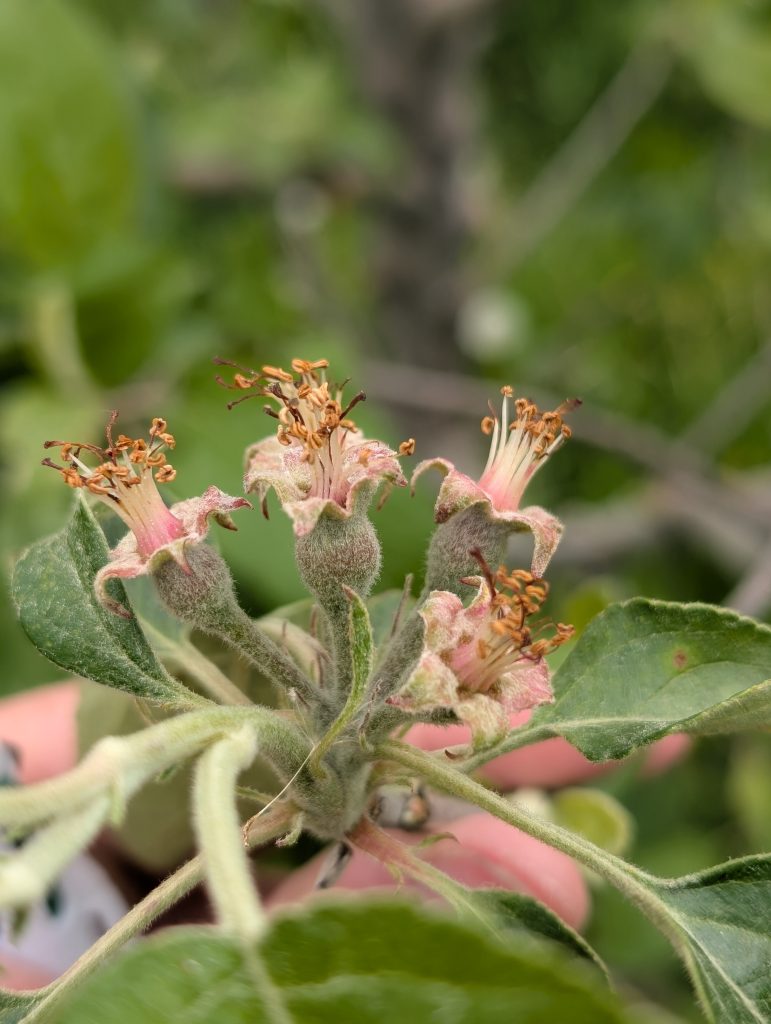
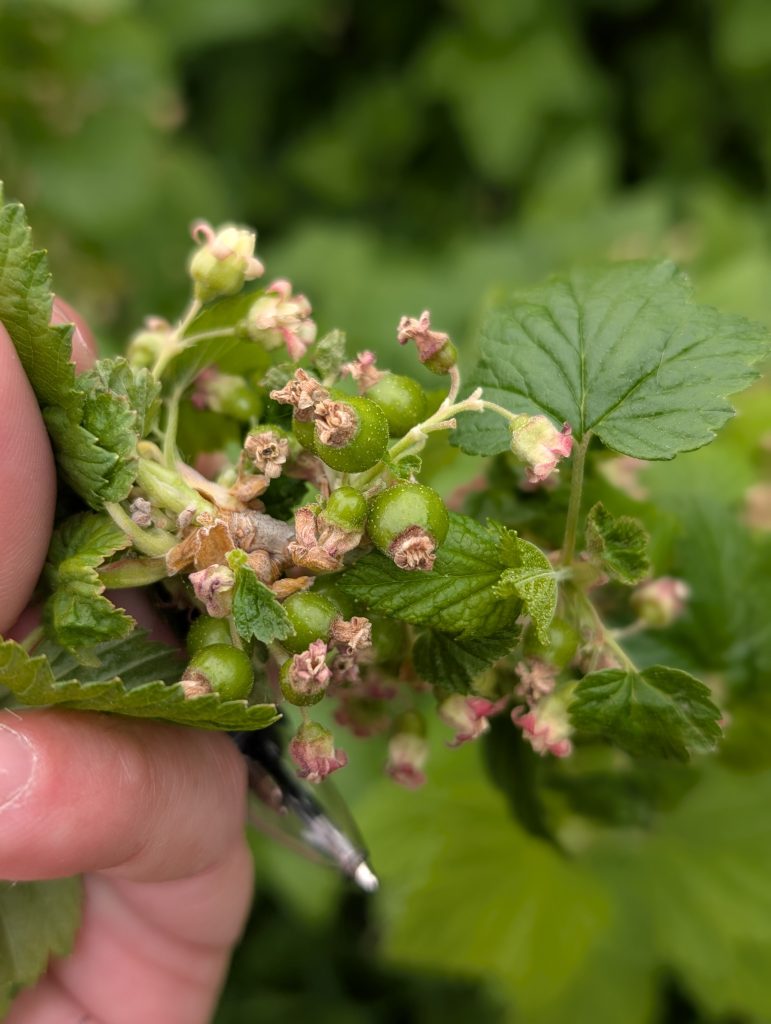
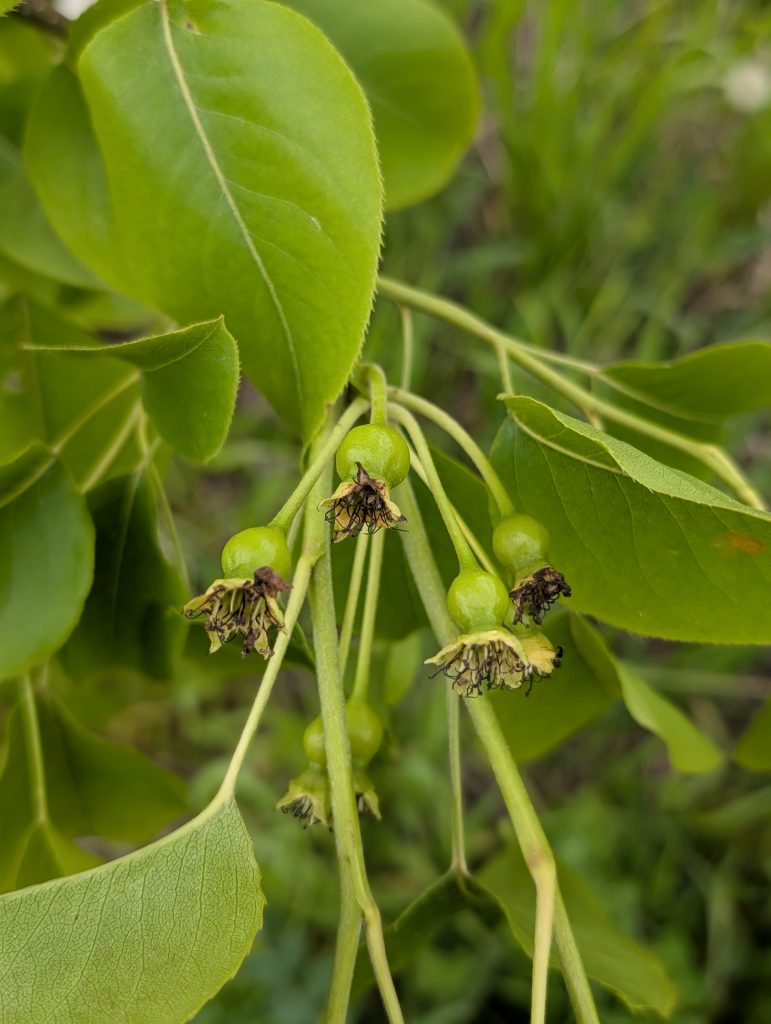
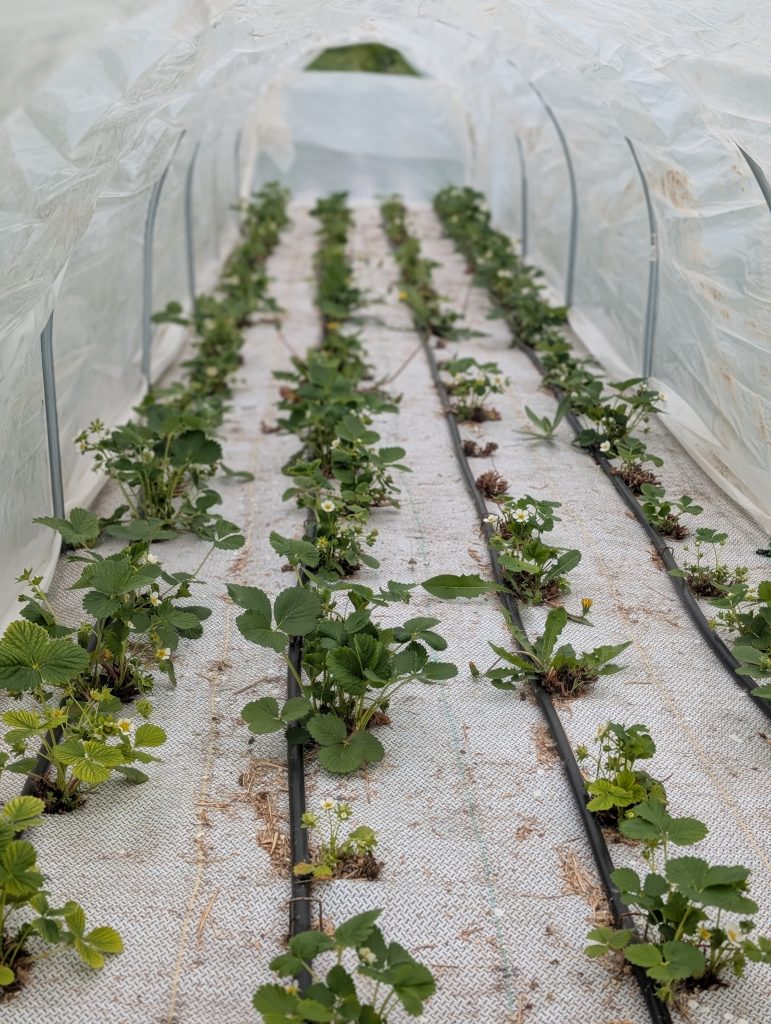
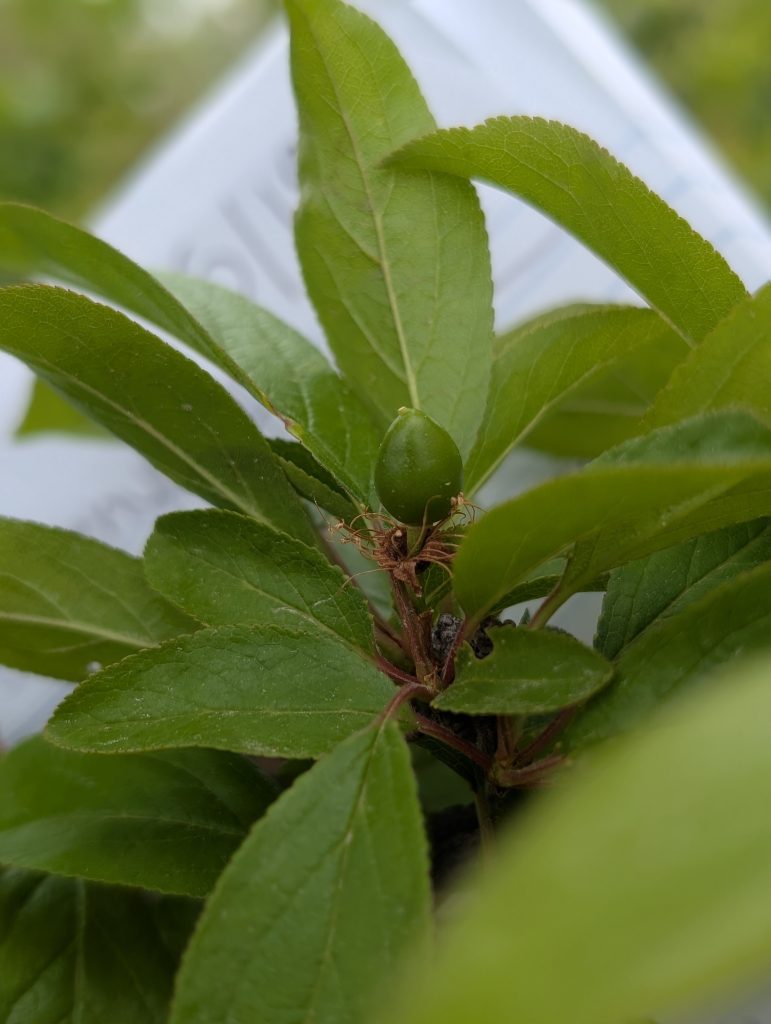
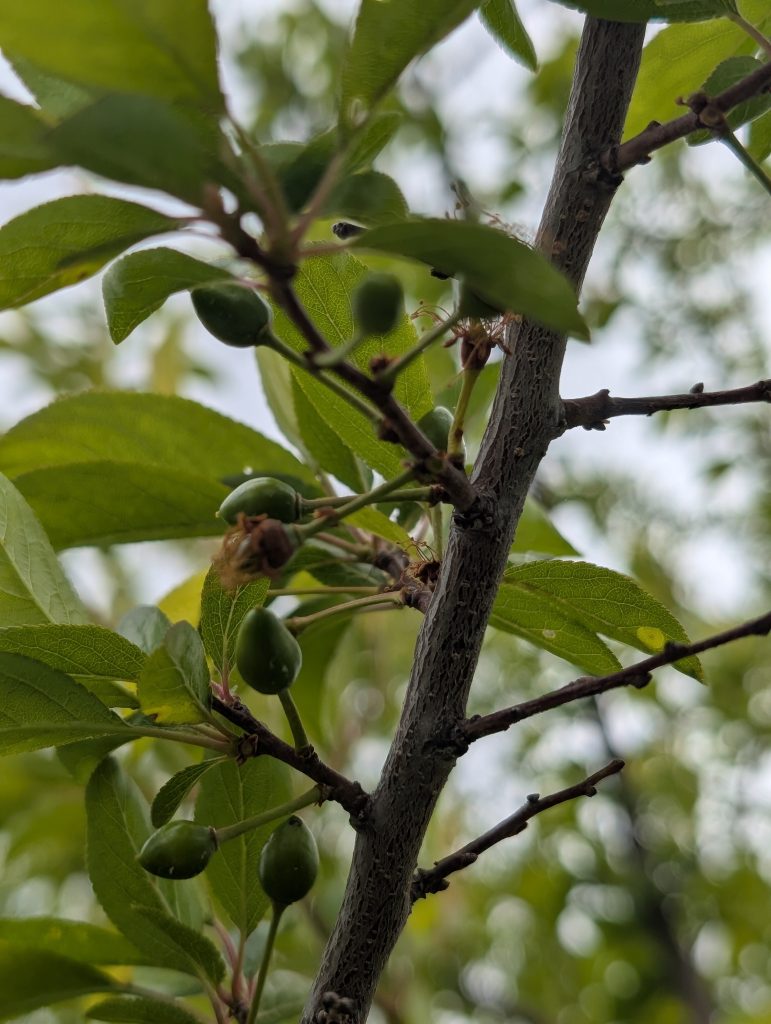
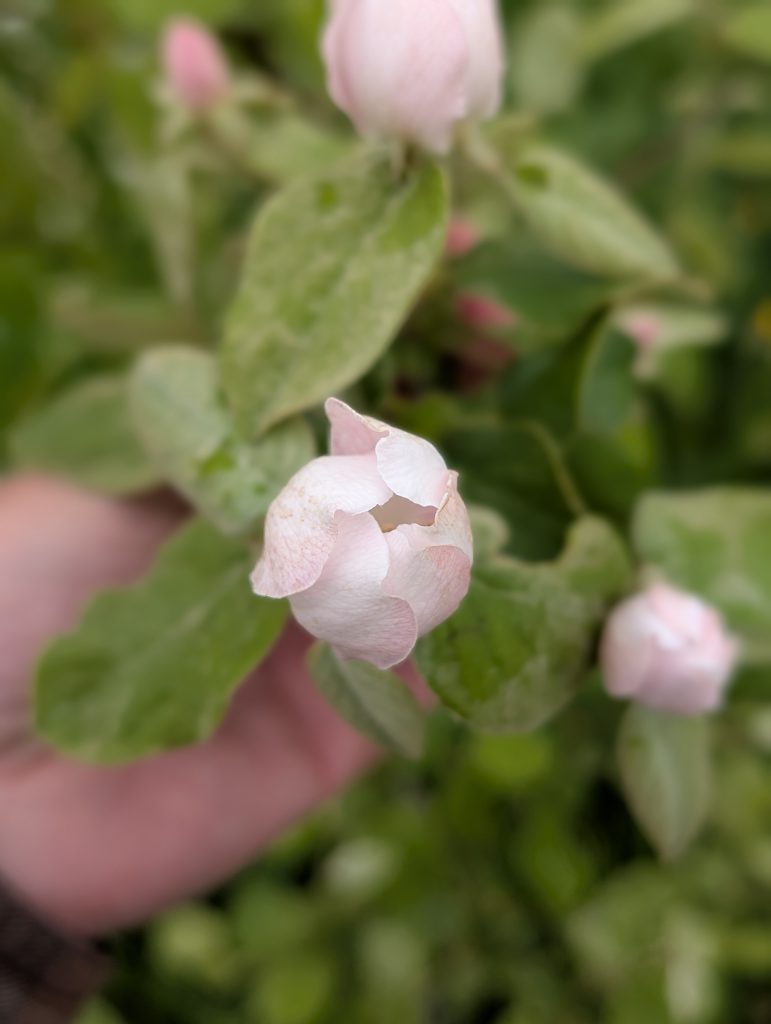
As I pulled into the farm on Monday morning, I was met with a special treat – cows marching in procession from the milking parlor to the grazing field. The calves were curious and of course, absolutely adorable. I snapped a few pictures, hopped in the Gator with Ben and we took off to check out the orchard.
The warm, dry weather has been ideal for bloom and early-season disease management, especially compared to 2024. Last year was difficult for early-season disease management with warm temperatures and lots of precipitation. Gwenyn Hill has a history of scab, cedar apple rust and peach leaf curl. So far this year, peach leaf curl has been a challenge, affecting nearly every peach tree, though no signs of scab or cedar apple rust. BBen has been hesitant to apply copper for peach leaf curl as the orchard is often grazed in the fall and early spring by sheep. He is looking into an OMRI listed liquid lime sulfur to use in fall, right after leaf drop for better control. If copper is his only option he plans to fence off the peach rows from grazing.
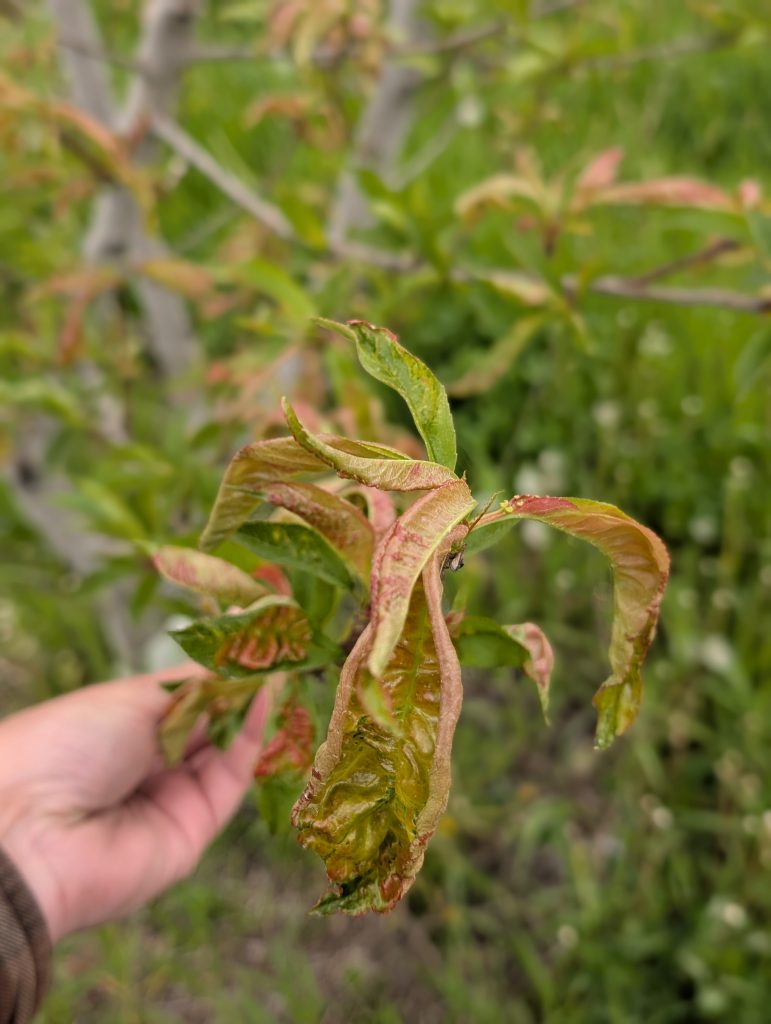
This week, Ben plans to continue his disease protectant rotation of Double Nickel (a Bacillus-based biofungicide) and Organic Sulfur. Ben is keeping AgriPhage (a bacteriophage, or virus, of the fire blight bacterium) on hand just in case conditions shift in favor of fire blight. A reminder that AgriPhage is applied as a protectant and/or rescue treatment for fire blight. Ben will eventually switch over to a rotation of Serenade (Bacillus subtilis strain QST 713), Potassium Bicarbonate and Lifegard (Bacillus Mycoides Isolate J (BmJ)) once risk for scab and fire blight subsides in mid-summer.
Last year Ben had soil and leaf/tissue testing completed and found the orchard is low in iron, zinc and boron, all important for growing healthy fruit! To combat this, Ben plans to go in with a foliar nutrition application. A quick reminder that best practice is to take soil samples every ~3 years or so. Here is a list of WI Certified Soil Testing Labs from WI DATCP: WI Soil/Manure Labs.
As for insects, it remains relatively quiet with no signs of plum curculio movement into the orchard. Ben does have a history of plum curculio and codling moth, both important petal fall insects, and plans on hanging codling moth mating disruption and 1X pheromone traps this week. Mating disruption helps deter codling moths, while pheromone traps help keep tabs on population pressure, and establish a biofix date. The biofix occurs when pheromone traps have captured 5+ moths in a single night, or across consecutive nights and is important for timing any management decisions. Check out this article to learn more about codling moth: Codling Moth – Management Options for Commercial and Backyard Growers.
In our next Notes from the Field, Ben and I will follow up on petal fall insects, disease management, and chat a bit more about the raspberry trial that was just planted this spring. Till next time!
This article series is NOT intended to be prescriptive for other orchards. It is simply an opportunity for our readership to hear from other growers about their experiences growing fruit crops in Wisconsin.
Growing the same crop does not always justify the same practices. Management decisions at your farm should be tailored to your operation and consider location, regional climate, disease and pest history of your vineyard, and your varieties.
The mention of a product is NOT an endorsement. Always follow the instructions on product labels and consult weather stations (ex. NEWA) in your area for current weather forecast and disease and pest prediction models.
This article was posted in Notes from the Field and tagged Ben Kraus, Josie Dillon, Notes from the Field.
